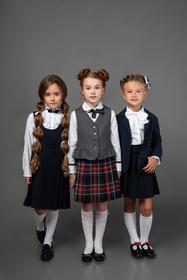For the 2025-26 school year, there are 4 public high schools serving 732 students in Pine City Public School District. This district's average high testing ranking is 6/10, which is in the top 50% of public high schools in Minnesota.
Public High Schools in Pine City Public School District have an average math proficiency score of 40% (versus the Minnesota public high school average of 36%), and reading proficiency score of 47% (versus the 51% statewide average).
Public High School in Pine City Public School District have a Graduation Rate of 88%, which is more than the Minnesota average of 83%.
The school with highest graduation rate is Pine City Secondary, with ≥95% graduation rate. Read more about public school graduation rate statistics in Minnesota or national school graduation rate statistics.
Minority enrollment is 14% of the student body (majority Hispanic and Asian), which is less than the Minnesota public high school average of 37% (majority Hispanic and Black).
Overview
This School District
This State (MN)
# Schools
8 Schools
1,171 Schools
# Students
1,594 Students
309,919 Students
# Teachers
90 Teachers
18,769 Teachers
Student-Teacher Ratio
18:1
18:1
Student By Grade
District Rank
Pine City Public School District, which is ranked within the top 50% of all 520 school districts in Minnesota (based off of combined math and reading proficiency testing data) for the 2022-2023 school year.
The school district's graduation rate of 50% has decreased from 90-94% over five school years.
Overall District Rank
#219 out of 525 school districts
(Top 50%)
(Top 50%)
Math Test Scores (% Proficient)
45%
46%
Reading/Language Arts Test Scores (% Proficient)
48%
51%
Science Test Scores (% Proficient)
46%
41%
Graduation Rate
50%
84%
Students by Ethnicity:
Diversity Score
0.25
0.57
% American Indian
n/a
2%
% Asian
2%
7%
% Hispanic
3%
11%
% Black
1%
11%
% White
87%
63%
% Hawaiian
n/a
n/a
% Two or more races
7%
6%
All Ethnic Groups
District Revenue and Spending
The revenue/student of $14,708 in this school district is less than the state median of $17,860. The school district revenue/student has stayed relatively flat over four school years.
The school district's spending/student of $15,453 is less than the state median of $18,585. The school district spending/student has stayed relatively flat over four school years.
Total Revenue
$23 MM
$15,547 MM
Spending
$25 MM
$16,179 MM
Revenue / Student
$14,708
$17,860
Spending / Student
$15,453
$18,585
Best Pine City Public School District Public High Schools (2025-26)
School
(Math and Reading Proficiency)
(Math and Reading Proficiency)
Location
Quick Facts
Rank: #11.
Pine City Secondary
(Math: 40% | Reading: 47%)
Rank:
Rank:
5/
Bottom 50%10
1400 Main St S
Pine City, MN 55063
(320) 629-4111
Pine City, MN 55063
(320) 629-4111
Gr: 7-12 | 699 students Student-teacher ratio: 19:1 Minority enrollment: 13%
Rank: #22.
Pine City Area Learning Center
Alternative School
(Math: <50% | Reading: ≥50% )
Rank:
Rank:
4/
Bottom 50%10
1225 Main St S
Pine City, MN 55063
(320) 629-4111
Pine City, MN 55063
(320) 629-4111
Gr: 9-12 | 33 students Student-teacher ratio: 17:1 Minority enrollment: 18%
Recent Articles

School Vouchers: Updated Pros and Cons (2025 Review)
Comprehensive 2025 analysis of school vouchers, weighing benefits and challenges for families, funding, outcomes, and policy directions.

Benefits and Drawbacks of Homework in 2025
Explore updated 2025 insights on homework鈥檚 benefits, drawbacks, mental health impact, best practices, and policy trends in U.S. public schools.

Charter Schools vs Public Schools 2025: Key Differences & Trends
Explore updated 2025 insights comparing charter schools vs public schools, enrollment, academic outcomes, funding, and real-world examples for families and educators.





